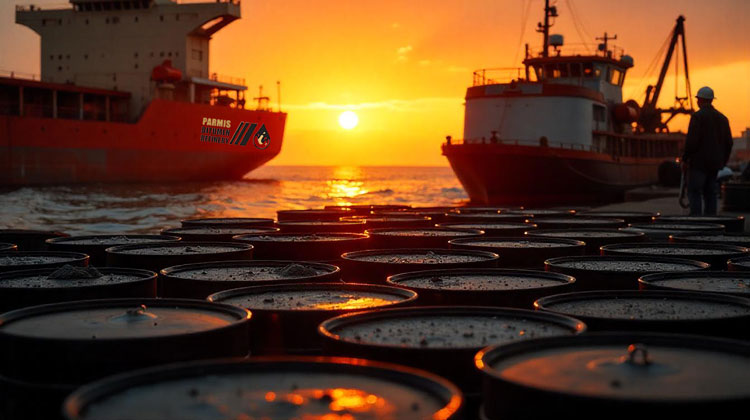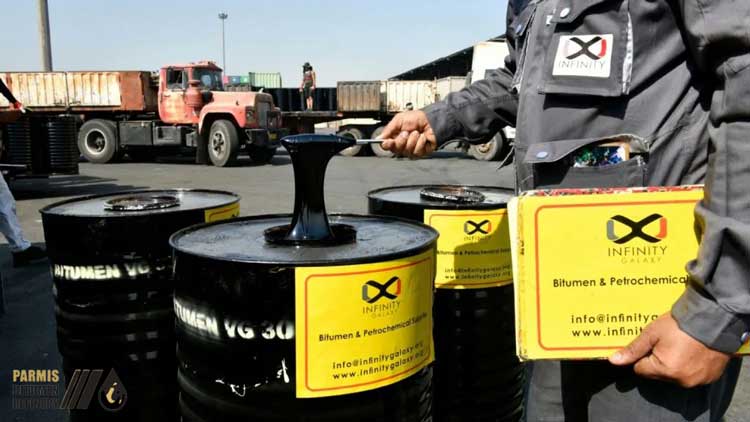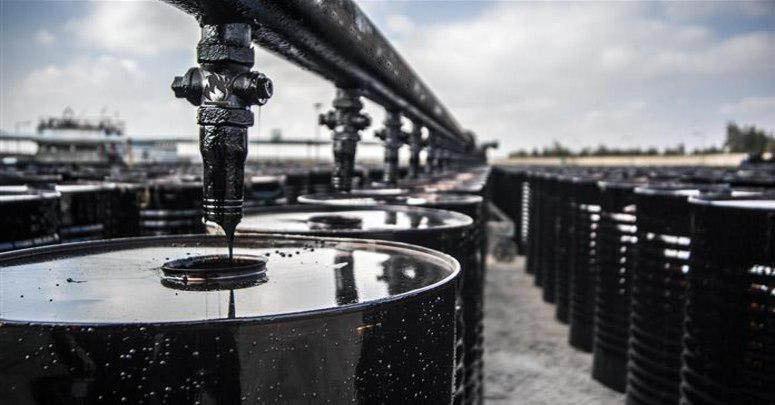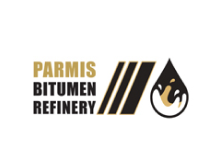Why is the price of Iran bitumen more competitive compared to other countries, and why is there such a large difference between bulk bitumen prices and drum-packed bitumen prices? In this article from Parmis, we examine all the factors that influence the value of bitumen in Iran and worldwide. By reading this article, you will learn what drives bitumen prices up or down, the difference between 85/100 and 60/70 grades, and which packaging option is more cost-effective for you. This guide is especially for you if you are active in the bitumen market or looking for a secure purchase.
How is the Bitumen Price Determined and What Controls It?
The bitumen price in Iran is shaped by a combination of economic, structural, and technical factors. The primary basis for pricing is the Vacuum Bottom (VB) rate, which is the main feedstock for bitumen production and is determined through the Iran Mercantile Exchange. This rate is usually announced twice a week and serves as the benchmark for calculating bitumen prices.
In addition, factors such as exchange rates, transportation costs, packaging type (bulk or drum), bitumen grade 60/70 or 85/25, and domestic or international market demand play a decisive role in the final price. Grade and quality also have a direct impact. For example, harder grades like 30/40, which are used in hot climates, typically command higher prices.
Impact of Vacuum Bottom Rates on Domestic and Export Bitumen Prices
In Iran, the VB rate is one of the main factors influencing bitumen prices. This feedstock, extracted from refinery vacuum towers, directly determines the base price of bitumen in the Mercantile Exchange. For example, an increase in VB prices in April not only impacted the domestic market but also raised export prices. Higher VB rates push production costs upward and can reduce Iranian producers’ competitiveness in the international market.
The Role of Exchange Rate Fluctuations in Iran’s Bitumen Pricing
The exchange rate—particularly the U.S. dollar—is the second key factor in determining the value of bitumen in Iran. Since bitumen exports are based on the dollar and other foreign currencies, an increase in the exchange rate against the Iranian rial makes the price of Iranian export bitumen more competitive in global markets.

Global Influences on Bitumen Prices in 2025
In 2025, the global bitumen market was affected by structural, environmental, and political factors. These included rising crude oil prices, export restrictions by some countries, and growing demand in Asia and Europe.
Bitumen prices are heavily tied to crude oil fluctuations, as bitumen is a byproduct of oil refining. Changes in customs tariffs, international freight costs, and steel drum prices also played a key role in 2025.
Link Between Global Oil Prices and Export Bitumen Prices
The global price of crude oil is directly connected to export bitumen prices because bitumen is a derivative of crude. Any increase or decrease in oil prices typically translates proportionally to bitumen prices. Common export grades such as 60/70 and 85/100 bitumen are often priced in line with global oil trends.
Global Bitumen Market Conditions and the Role of Competitors
Iran is one of the main bitumen exporters in the region but faces competition from countries such as Saudi Arabia, Bahrain, and India. These competitors benefit from newer technologies and shorter transportation routes, enabling them to offer lower prices.
Packaging differences also play a role in competition. For instance, lighter and standardized drums, such as 190 kg drums with a thickness of 0.6 mm, reduce costs and increase sales. Additionally, the distance from export ports to target markets is a key factor in determining export prices.
Why Do Bitumen Prices Differ Between Iran and Other Countries?
Price differences between Iran and other countries are influenced by various factors, including production structure, energy costs, packaging types, distance to target markets, and domestic policies.
Key Differences in Iran’s Bitumen Production and Export Structure Compared to Competitors:
Iran has six active bitumen refineries located in cities such as Tehran, Shiraz, Arak, Bandar Abbas, Abadan, and Tabriz. Pasargad Oil Company alone produces over 1.2 million tons of bitumen annually, with 56% allocated for export. In contrast, some countries with lower production but higher quality capture a larger share of the global market.
Factors influencing price differences include:
- Production and packaging costs
- Packaging type and export standards
- Distance to export ports
- Domestic and international transportation costs
- Subsidy policies or price liberalization

Main Domestic Factors Affecting Bitumen Prices in Iran
In the domestic market, bitumen prices are directly affected by factors such as VB rates, refinery capacity, bitumen grade, regional demand, and seasonal consumption trends. These create a
variable mix that drives price fluctuations
Key domestic market factors include:
- Refinery production capacity
- Bitumen quality and grade (60/70, 85/25, 90/15, etc.)
- Compliance with standards and certifications
- Seasonal and regional demand
- Price fluctuations in the Mercantile Exchange
Mercantile Exchange vs. Free Market Bitumen Prices: Differences and Reasons
The Iran Mercantile Exchange serves as the official benchmark for bitumen pricing. However, free market prices often differ from exchange prices. This gap is due to factors such as settlement timelines, real-time exchange rate changes, and indirect costs.
Exchange prices are updated weekly with some delay, while the free market reacts instantly to currency fluctuations. Moreover, buying from the Exchange requires a trading code and official procedures, while free market transactions are faster and more flexible.
- Main causes of price gaps include:
- Price update schedules in the Exchange
- Transaction-related indirect costs
- The role of brokers and intermediaries
- Supply-demand structure
- Exchange base prices and price ceilings
| Recommend article: What is Bulk Bitumen? |
- Conclusion
- Bitumen prices are influenced not only by raw material costs but also by economic conditions and international factors. The VB rate in the Energy Exchange is the main pricing foundation. For example, when VB prices in April 2024 reached 124,000 IRR per kilogram, bulk bitumen prices rose to about 18 million IRR per ton.
- If you’re a bitumen buyer or active in related industries, understanding these factors can help you make better purchasing decisions. For more insights into bitumen market analysis and other related topics, visit Parmis’ blog.
- FAQs
- How does the VB rate affect final bitumen prices?
- Bitumen prices are directly tied to the VB rate. An increase in VB prices raises the base price of bitumen in the Exchange.
- Does packaging quality affect export bitumen prices?
- Yes. Poor packaging can damage bitumen during transportation, lowering buyer confidence and export prices.
- Does seasonal change affect bitumen demand?
- Yes. During rainy and cold seasons, bitumen consumption decreases, leading to stable or lower prices.
- Which countries have the highest demand for Iran bitumen?
- India, China, the UAE, and African countries are the main buyers of Iran bitumen. Geographical location and competitive pricing give Iran an export advantage.


